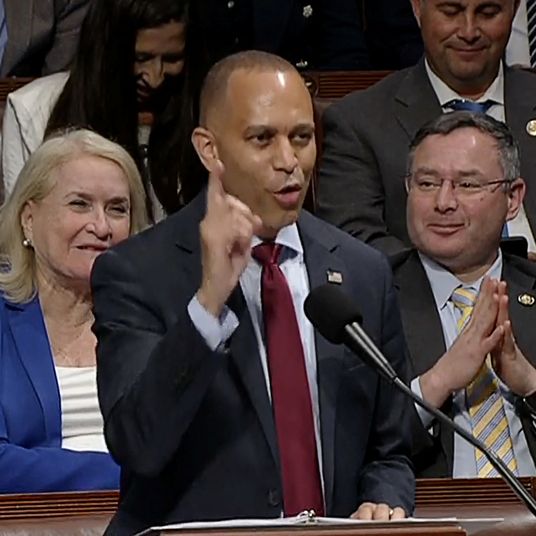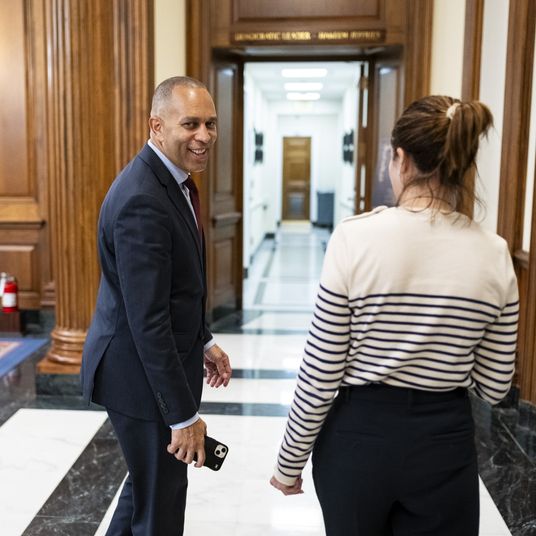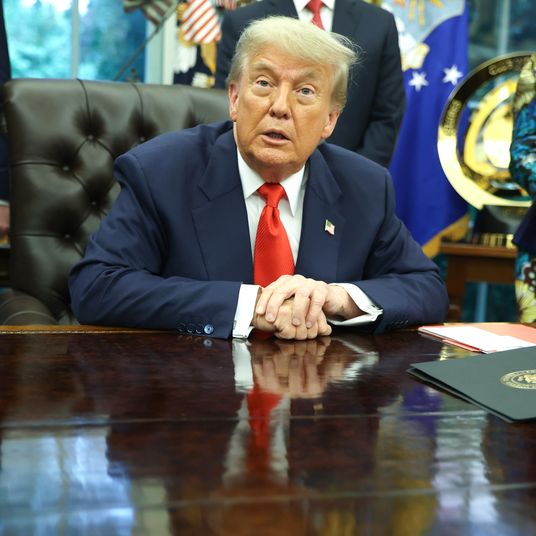
After an all-night session mostly consumed with voting down Democratic amendments, the U.S. Senate passed Donald Trump’s budget-reconciliation megabill by the smallest-possible margin: 51-50, with Vice-President J.D. Vance breaking a tie. Three Republicans — Susan Collins, Rand Paul, and Thom Tillis — voted no. The key breakthrough occurred when the GOP leadership worked out enough special provisions to help Alaska avoid Medicaid, SNAP, and clean-energy cuts to nail down the vote of Lisa Murkowski. Her support was endangered during the long night when the Senate parliamentarian vetoed earlier deals as technically out of compliance with budget rules.
It may be a while before we fully grasp how many last-minute deals were necessary to lubricate passage of this unwieldily messy and — regardless of its “Big Beautiful Bill” moniker — disorderly legislation. But despite plenty of grousing from various quarters about the bad effects of Medicaid cuts and a low growl of rebellion from deficit hawks demanding much deeper cuts, in the end not enough Senate Republicans were willing to rebel against a president who has been denied almost nothing by his allies in the legislative or judicial branches of government. Tillis won the freedom to vote no by abandoning his own reelection campaign, Collins was probably given a “free vote” to protect her own 2026 campaign in blue Maine, and Paul was as usual going his own way. So it was a near thing that became a done deal, and John Thune will store up treasure in MAGA-land for his arm-twisting and deal-cutting efforts.
There won’t be much time for celebration, though, since now the White House and all the bought-and-sold senators will concentrate on a maneuver known as “jamming the House.” It has been generally conceded by all Republicans that there’s no time or political space for a formal House-Senate conference to reconcile the megabill language passed by each chamber. House Republicans abundantly and often negatively expressed their concerns about changes the Senate made to their own handiwork and to all the deals they cut to get it through the House in May. Now they face a take-it-or-leave-it proposition, lest the whole enterprise slip deeper into the summer and perhaps run up against the debt-limit “X-date” that could arrive in August, when the federal government literally runs out of dough.
Just prior to Senate passage, Trump did drop hints that the informal but much-discussed July 4 soft deadline for getting the bill to his desk wasn’t absolutely mandatory. But there’s not much point in waiting around for last-ditch opposition to ripen in the House, where as many as 20 or 30 members may really, really want to vote “no” for reasons ranging from fear of Medicaid and SNAP cuts to demands for a bigger SALT deduction to overall unhappiness with the deficits this bill provides (even if they’re clumsily hidden by phony accounting). In addition, many MAGA voices will bray about the need to speed megabill dollars to ICE to ramp up the mass deportations they so enjoy. So the odds are high that Trump will help Mike Johnson apply the screws to every House Republican (they can only afford to lose two, other than the loudly rebellious Thomas Massie, if all the Democrats show up to vote) to get them to go along with it, perhaps with some side deals about later spending or spending cuts. For now, the best bet is that this abominable package that enacts the most significant social-safety-net cuts in decades while delighting the very wealthy will slouch across the finish line quite soon.
























